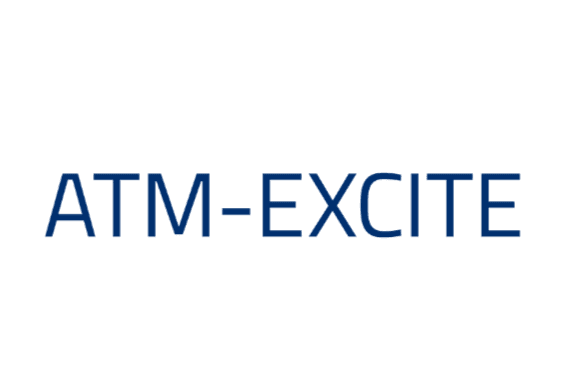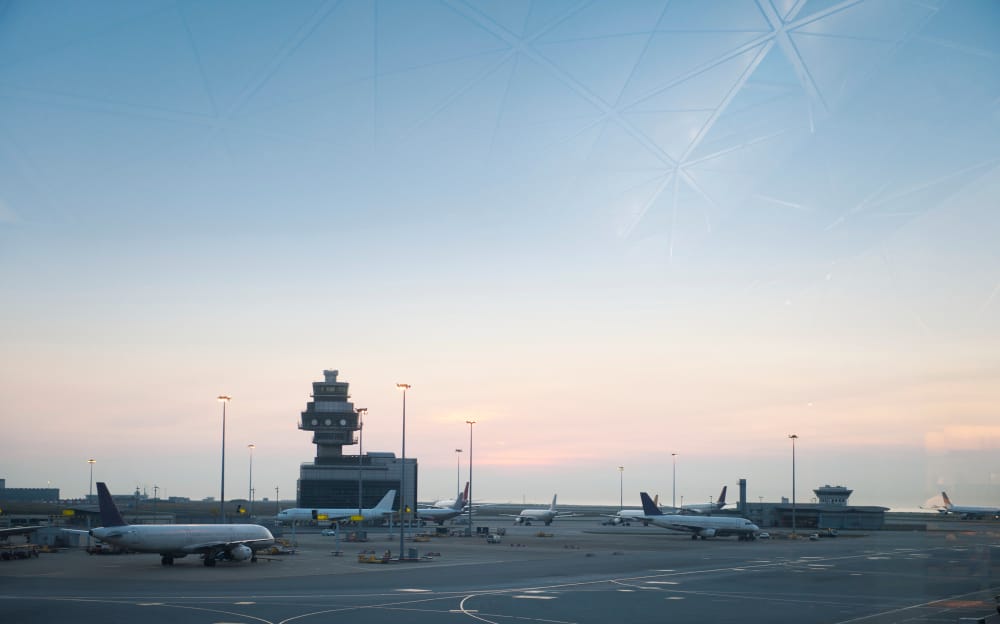Table of contents
ToggleThe European ATM Master Plan is the EU-endorsed roadmap that steers the modernisation of air traffic management (ATM) across Europe and aligns all stakeholders with the Single European Sky (SES) goals of safety, capacity, cost-efficiency, environmental sustainability, and military mission effectiveness. The European ATM Master Plan is the EU-endorsed roadmap that steers the modernisation of air traffic management (ATM) across Europe and aligns all stakeholders with the Single European Sky (SES) goals of safety, capacity, cost-efficiency, environmental sustainability, and military mission effectiveness.
As the EU accelerates its aviation digitalisation agenda, the SESAR 3 Programme—marketed under the “Digital European Sky” banner—acts as the technological cornerstone that ties the Master Plan to overarching policy instruments such as the Sustainable and Smart Mobility Strategy and SES2+ regulation.
At ATM Excite we are playing a pivotal role in shaping this future, providing cutting-edge solutions to optimize air traffic management and streamline operations. Their efforts are crucial in supporting the integration of new technologies and ensuring a seamless, sustainable air traffic system across Europe.
What is the European ATM Master Plan?
The European ATM Master Plan is a comprehensive, living strategy—mandated by EU Regulation 409/2013—that modernises and synchronises ATM research, deployment, and regulation across Europe on a rolling horizon up to 2045. Developed Maintained through SESAR projects such as PJ20 AMPLE and its Wave 2 successor, the Master Plan optimises air traffic operations, mitigates congestion, and elevates safety, cost-efficiency, and carbon performance for both civil and military users. The 2025 Edition extends the vision horizon to 2045, positioning Europe’s aviation ecosystem to accommodate 16 million flights annually, integrate uncrewed aircraft, and remain resilient to climate, cybersecurity, and defence challenge.
With traffic already surpassing pre-pandemic levels and forecast to rise by roughly 5% per year until 2030, the Master Plan charts the transformation required to keep European skies safe, efficient, and operationally resilient under increasing complexity. The plan mandates cross-border collaboration among states, ANSPs, airlines, airports, and military authorities to integrate cutting-edge enablers such as advanced automation, SWIM-based data sharing, greener flight profiles, and cloud-hosted common ATM services. Strategically, the Master Plan underpins the creation of a truly unified European airspace capable of mitigating congestion, slashing CO₂ and non-CO₂ climate impacts, closing technology gaps, and strengthening cyber-resilience and defence readiness
The Master Plan is explicitly referenced in SES2+, the Network Strategy Plan, and the European Plan for Aviation Safety, thereby anchoring ATM modernisation within EU policy on capacity, environmental sustainability, safety, security, and defence integration. By leveraging SESAR’s €1.6 billion R&I portfolio, the blueprint cements Europe’s position as a global aviation leader and delivers wider socio-economic benefits including high-skill jobs, cleaner mobility, and enhanced strategic autonomy.
Key Objectives of the European ATM Master Plan
The European ATM Master Plan outlines several key objectives that are essential to achieving its vision of a modernized, efficient, and sustainable air traffic management system for Europe, especially in the post-2025 landscape.
Interoperability
A primary goal is to achieve full technical and procedural interoperability, allowing aircraft trajectories and ATM data to pass seamlessly across national borders and functional airspace blocks irrespective of civil or military status. Interoperability fosters harmonised data exchange, reduces air-ground communication latency, and unlocks network-wide efficiency gains by eliminating redundant security buffers and tactical vectoring
Digitization
Digitizing air traffic management processes is another key objective. By introducing advanced digital technologies, such as automated flight planning and data sharing, the plan aims to make air traffic operations faster, more efficient, and less prone to human error.
Automation
High-level automation—encompassing machine-learning-driven conflict detection, digital tower services, and autonomous network flow optimisation—is pivotal to future ATM scalability. These automated systems drive down ANSP operating costs, enhance predictive safety nets, and—when combined with trajectory-based operations—are projected to raise en-route capacity by up to 30%. Controller decision-support tools under SESAR Solution PJ.24 enable each sector team to handle more aircraft without raising workload, thereby mitigating delay propagation and delivering smoother traffic flows.
Sustainability
Sustainability is a core pillar of the European ATM Master Plan, aiming to reduce the environmental footprint of aviation. The plan supports the development of greener technologies and practices, such as fuel-efficient flight paths and the integration of sustainable aviation fuels, helping Europe meet its climate goals.
SESAR 2025: Key goals and priorities
SESAR 2025 is a pivotal program within the European ATM Master Plan, aimed at revolutionizing air traffic management (ATM) across Europe. Building on the successes of previous SESAR phases, SESAR 2025 will focus on ensuring that European airspace remains safe, efficient, and sustainable, while meeting the demands of rapidly increasing air traffic. As the aviation landscape continues to evolve, the program will tackle future challenges, including the integration of unmanned aerial vehicles (UAVs), managing the growth of air traffic, and ensuring the seamless integration of military aviation with civil air traffic.
The main goals of SESAR 2025 include enhancing the capacity of the European airspace, reducing operational delays, and minimizing the environmental impact of aviation. The program will also address key challenges such as the rise of unmanned aircraft systems (UAS), which require new air traffic management solutions, and the integration of military aviation into the increasingly crowded European airspace. Additionally, SESAR 2025 will work towards creating a more flexible airspace that can adapt to the needs of different types of aircraft, from commercial airliners to drones, improving the overall flow and efficiency of air traffic across Europe.
By focusing on these critical areas, SESAR 2025 will help future-proof European air traffic management and keep pace with technological advancements and emerging needs in the aviation sector.

SESAR’s technological innovations
SESAR 2025 integrates a range of cutting-edge technologies designed to revolutionize communication, navigation, and surveillance within the air traffic management system. These innovations include advanced communication systems that enable real-time data exchange between aircraft and ground control, enhancing decision-making capabilities. Navigation systems will see improvements in precision, allowing for more efficient flight paths and reducing fuel consumption.
Additionally, SESAR 2025 introduces next-generation surveillance technologies that provide better tracking and monitoring of aircraft, improving safety and reducing the risk of airspace congestion. Together, these technologies will enhance the overall efficiency and safety of European air traffic, ensuring that the system can accommodate the growing demands of the future.
Civil–Military Interoperability: Why It Matters for Europe’s Skies
Crucially, the 2025 Edition embeds an upgraded civil–military cooperation framework—Advanced Flexible Use of Airspace (AFUA) and Dynamic Airspace Configuration (DAC)—to ensure that mission-critical military trajectories can coexist with dense civil traffic without sacrificing performance. These concepts introduce real-time, cross-border allocation of dynamic mobile areas and mission trajectories, supported by collaborative decision-making between the Network Manager, ANSPs, and defence authorities.
The future air traffic strategy in the EU
The EU’s future air traffic strategy for 2025 and beyond is focused on building a resilient, efficient, and sustainable air traffic management system to meet the growing demands of European aviation. With air traffic expected to increase significantly in the coming decades, the European Union is committed to transforming its airspace management to ensure that flights are safer, more efficient, and environmentally friendly. The strategy, centered around the European ATM Master Plan and SESAR 2025, seeks to integrate cutting-edge technologies and innovative practices to address emerging challenges such as increased air traffic, the rise of unmanned aerial vehicles (UAVs), and the need for sustainable aviation.
One of the central pillars of the EU air traffic strategy is safety. The future air traffic system will rely on advanced surveillance and communication technologies to provide real-time data, enabling better decision-making and improved safety standards. Additionally, the strategy prioritizes efficiency, with plans to reduce delays, optimize air traffic flow, and improve fuel efficiency. This will be achieved through innovations in automation, digitalization, and the creation of flexible airspace that can adapt to different types of aircraft, from commercial airliners to drones.
Security is another crucial element of the EU’s strategy, ensuring that air traffic management is protected from cyber threats and disruptions. The integration of secure communication systems and the development of robust defense measures will safeguard the integrity of European airspace.
Overall, the EU’s air traffic strategy for 2025 and beyond aims to create a harmonized air traffic management system that meets the challenges of the future while fostering innovation, collaboration, and sustainability within European aviation.
The impact of the ATM Master plan on Civil-Military coordination
The integration of civil and military airspace use is a key objective of the European ATM Master Plan, aimed at fostering better coordination between these sectors to optimize airspace management. The plan emphasizes the need for seamless interoperability between civil and military air traffic control systems, ensuring that both sectors can operate effectively within the same airspace while maintaining safety and efficiency. This integration is particularly vital as air traffic volumes continue to grow and new airspace users, such as unmanned aerial vehicles (UAVs), emerge.
ATM-EXCITE, a key player in this integration, addresses the challenges of air traffic interoperability between the civil and military sectors. By developing advanced communication and coordination tools, ATM-EXCITE ensures that both sectors can share real-time information, reducing the risk of congestion and conflicts in the airspace. The platform’s innovations in data sharing, tracking, and automated decision-making help create a more cohesive airspace management system, which enhances both civil and military operational efficiency.
The ATM Master Plan’s vision, supported by initiatives like ATM-EXCITE, leads to improved safety, fewer delays, and more effective use of European airspace by harmonizing civil and military needs.

A new era for European Air Traffic Management
The European ATM Master Plan sets the stage for a transformative shift in air traffic management by 2025, with a focus on safety, efficiency, and sustainability. By embracing innovative technologies like automation, digitization, and enhanced civil-military coordination, the plan aims to revolutionize how European airspace is managed. With initiatives like SESAR 2025 and ATM-EXCITE leading the way, stakeholders must collaborate and adapt to ensure a seamless, future-ready air traffic system. The future of air traffic management is here, let’s work together to make it a reality.






